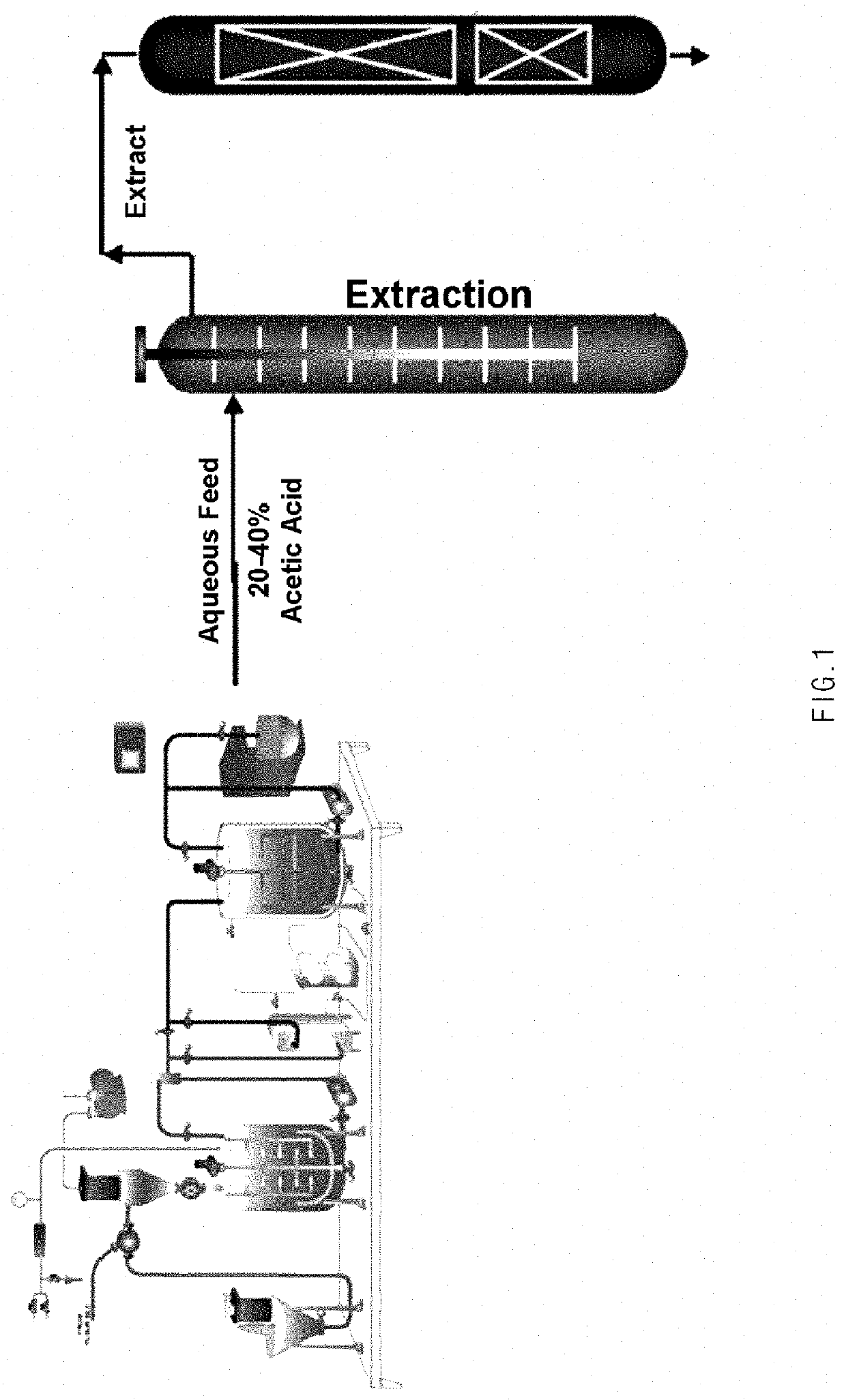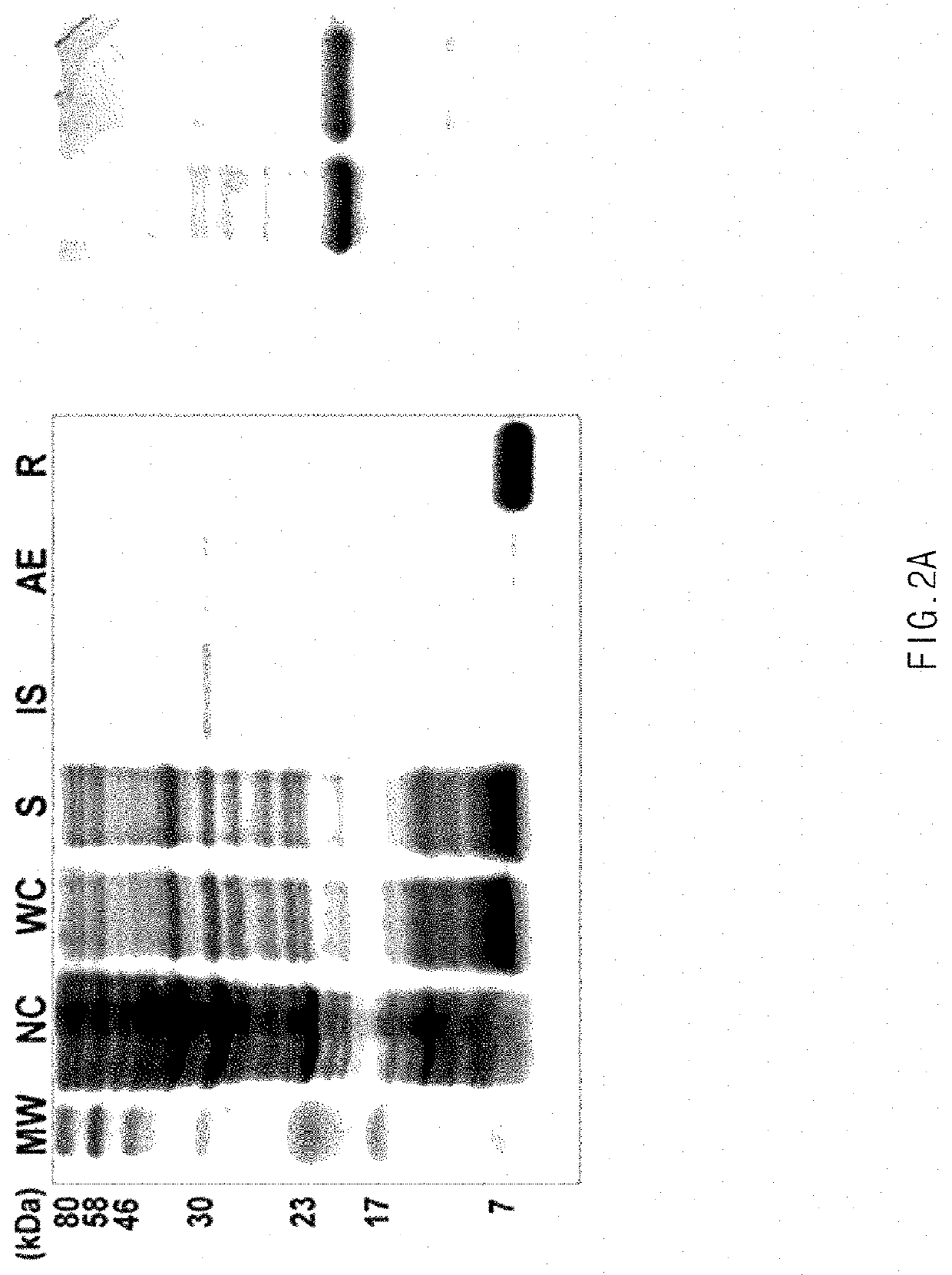Method for separating and purifying mussel adhesive protein
a technology of adhesive protein and separation method, which is applied in the field of separation and purification of mussel adhesive protein with high purity, can solve the problems of limited medical applications, the method for separating and purifying a mussel adhesive protein having a predetermined high purity is not established, etc., and achieves the effect of reducing production costs and high purity
- Summary
- Abstract
- Description
- Claims
- Application Information
AI Technical Summary
Benefits of technology
Problems solved by technology
Method used
Image
Examples
example 2
ion of Expression Vector with Functional Mussel Adhesive Protein
[0054]To prepare mussel adhesive fusion proteins having various functionalities, fusion peptides in which conventional functional peptide sequences set forth in SEQ ID NO: 22 to SEQ ID NO: 30 are linked to the C-terminal or N-terminal regions of a mussel adhesive protein, and requested to NovaCell Technology Inc. to construct expression vectors, respectively. E. coli BL21 (DE3) was transformed with the tailored vectors. In this case, the added sequences are listed in Table 2. Hereinafter, the antibacterial peptide-fused mussel proteins set forth in SEQ ID NO: 27 to SEQ ID NO: 30 are represented by “A,”“B,”“C,” and “D,” respectively.
TABLE 2SEQAdded peptideIDFusion site in musselsequenceNOadhesive proteinSPPRRARVT22C-terminusTWYKIAFQRNRK23C-terminusKNSFMALYLSKG24C-terminusGFPGER32C-terminusFRHRNRKGY26C-terminusKLWKKWAKKWLKLWKA27C-terminusFALALKALKKL28N-terminusILRWPWWPWRRK29C-terminusAKRHHGYKRKFH30C-terminus
example 3
on of Various Mussel Adhesive Protein Derivatives
[0055]3.1: Culture of E. coli BL21 (DE3)
[0056]E. coli BL21 (DE3) was cultured in an LB medium (5 g / liter yeast extract, 10 g / liter Tryptone, and 10 g / liter NaCl), and IPTG was added at a final concentration of 1 mM to induce expression of the recombinant antibacterial peptide-fused mussel adhesive protein until the optical density of a culture broth at 600 nm reached approximately 0.6. The E. coli BL21 (DE3) culture broth was centrifuged at 13,000 rpm and 4° C. for 10 minutes to obtain cell pellets, which were stored at −80° C.
[0057]3.2: Confirmation of Expression of Mussel Adhesive Protein
[0058]The cell pellets were diluted with 100 μg of a buffer solution for SDS-PAGE (0.5 M Tris-HCl, pH 6.8, 10% glycerol, 5% SDS, 5% β-mercaptoethanol, and 0.25% bromophenol blue), and boiled at 100° C. for 5 minutes so that the cell pellets were denatured. For SDS-PAGE, a sample was electrophoresed in a 15% SDS-polyacrylamide gel, and then stained w...
example 4
n and Purification of Mussel Adhesive Protein
[0059]The cell pellets obtained in Example 3.1 were stirred in a lysis buffer (2.4 g / L sodium phosphate monobasic, 5.6 g / L sodium phosphate dibasic, 10 mM EDTA, and 1% Triton X-100), and homogenized using a high-pressure homogenizer. The homogenate was centrifuged at 9,000 rpm for 20 minutes to obtain an insoluble protein aggregate including the mussel adhesive protein. The antibacterial peptide-fused mussel adhesive protein was extracted from the insoluble protein aggregate using 25% acetic acid, and then centrifuged at 9,000 rpm for 20 minutes to obtain a supernatant including the mussel adhesive protein. Acetone was added to the collected supernatant at a volume 2 to 3 folds higher than that of the supernatant, uniformly mixed for 30 minutes, and then centrifuged at 6,000 rpm for 20 minutes to collect an aggregate including the mussel adhesive protein. The aggregate was dissolved in purified water, and then centrifuged at 9,000 rpm for...
PUM
| Property | Measurement | Unit |
|---|---|---|
| pH | aaaaa | aaaaa |
| pH | aaaaa | aaaaa |
| pH | aaaaa | aaaaa |
Abstract
Description
Claims
Application Information
 Login to View More
Login to View More - R&D
- Intellectual Property
- Life Sciences
- Materials
- Tech Scout
- Unparalleled Data Quality
- Higher Quality Content
- 60% Fewer Hallucinations
Browse by: Latest US Patents, China's latest patents, Technical Efficacy Thesaurus, Application Domain, Technology Topic, Popular Technical Reports.
© 2025 PatSnap. All rights reserved.Legal|Privacy policy|Modern Slavery Act Transparency Statement|Sitemap|About US| Contact US: help@patsnap.com



